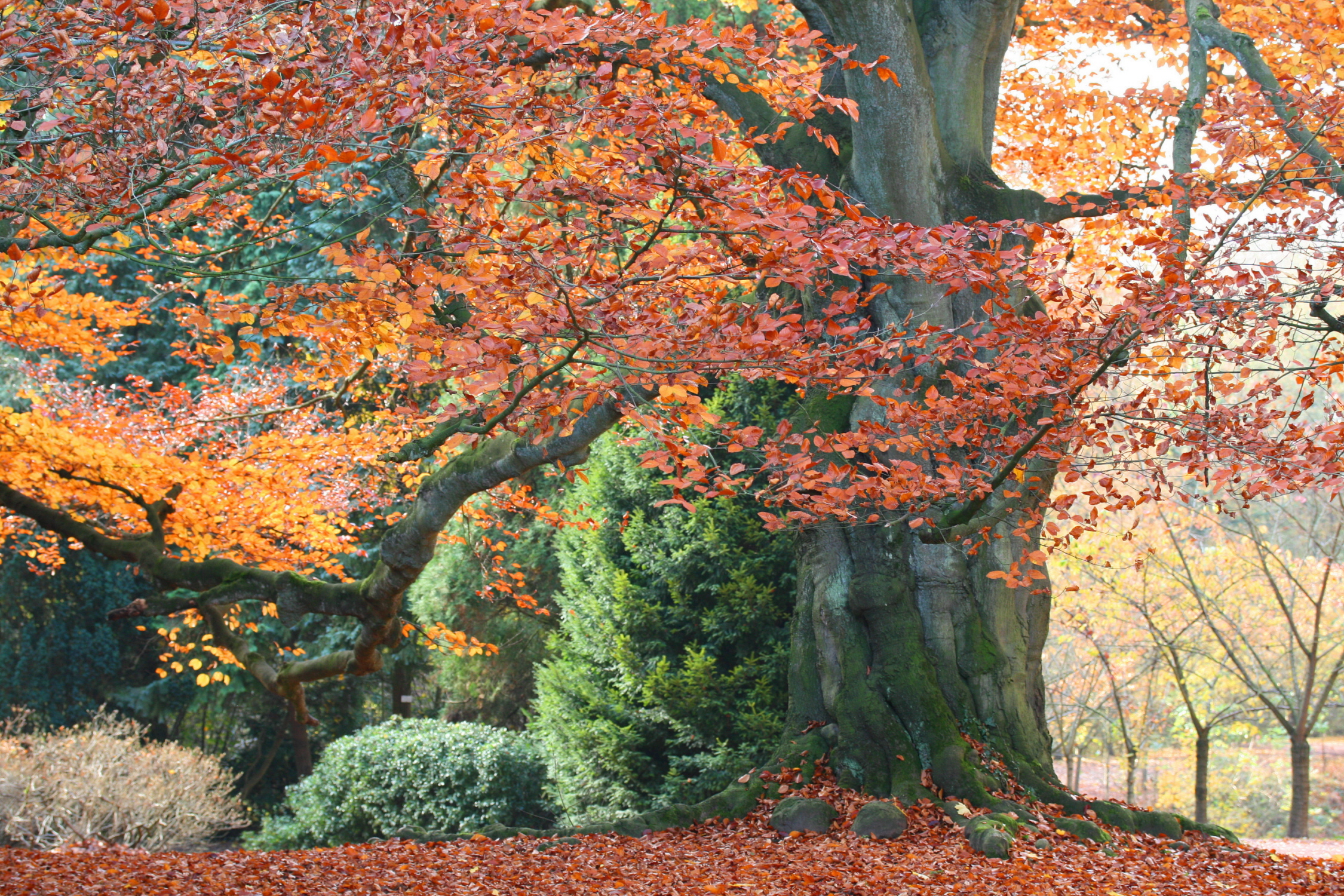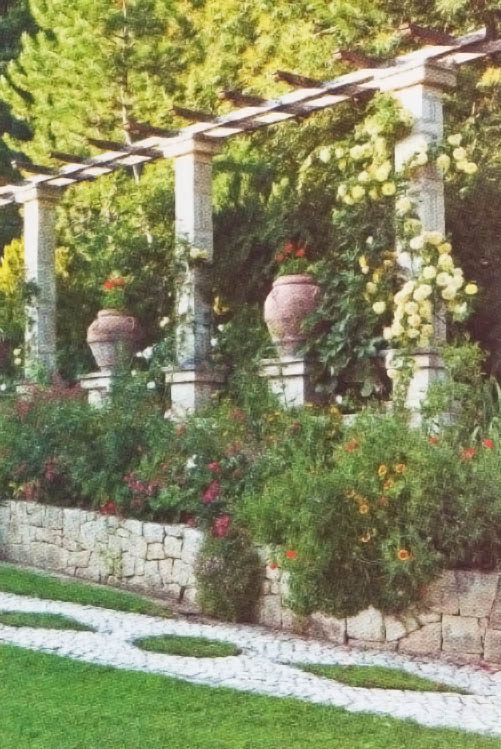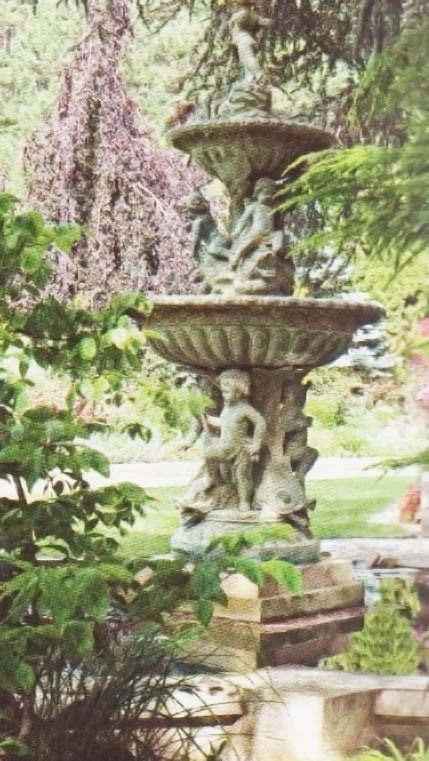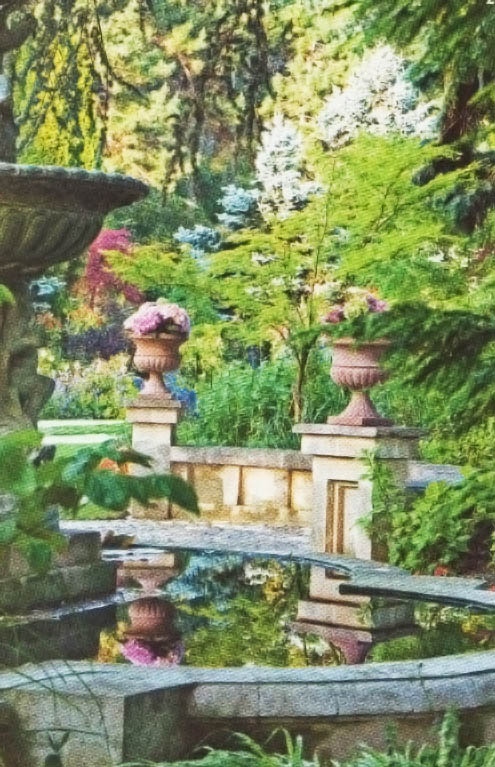
Giardino Sista
This post is also available in:
 Italiano (Italian)
Italiano (Italian)
ENGLISH TRANSALTION BELOW
Il Giardino Sista si trova alla periferia di L’Aquila, a 750 metri di altitudine, circondato da montagne e affacciato sulla valle dell’Aterno. È nato negli anni 60 grazie a Gianfranco Sista che desiderava un giardino dall’aspetto selvaggio come fosse stato seminato dal vento, in maniera del tutto naturale. L’ingresso, un cancello in legno coperto da vite americana (Parthenocissus tricuspidata) porta alla parte formale del giardino che ospita delle rigogliose bordure fiorite all’inglese piantumate con esemplari di Delphinium spp., lupini (Lupinus spp.), Phlox spp, echinacee, salvie e geranei.
Il proprietario, grande appassionato di antiquariato e bricolage, ha arricchito nel tempo il suo giardino con arredi di pregio quali una fontana in stile neoclassico nel primo novecento dove crescono le ninfee e un pozzo in pietra del settecento recuperato durante i lavori di restauro di un’antica casa. Per la pavimentazione degli ampi sentieri è stata scelta al selce, pietra antica comunissima nelle strade della città, e per renderla più interessante è stata impreziosita con intarsi di prato a forma di figure geometriche. Nelle vicinanze è possibile fare escursioni nei boschi di faggi secolari di Cornino, alla valle del Paradiso sul massiccio del Gran Sasso e alle foreste del Monte Sirente.
Le piante
All’interno del giardino si possono ammirare 1500 rose di 150 varietà diverse, un migliaio di erbacee perenni, circa 60 varietà di Clematis, 20 di papaveri orientali (Papaver orientale) e ortensie (Hydrangea spp). La zona alberata è nata con lo scopo di avere l’inverno tutto l’anno con chiome di colori differenti; è nata così la collezione arborea che va dal grigio dell’abete argentato (Picea pungens var. kosteriana glauca) al giallo dell’Acer negundo var. odessanum e dell’Acacia frisia; dal marrone scuro del faggio (Fagus sylvatica var. purpurea pendula) al verde maculato di giallo del libocedro (Libocedrus decurrens); dal verde brillante e rosso corallo di alcuni Acer palmatum var. dissectum al porpora-rosa-rosso del faggio tricolore (Fagus sylvatica var. tricolor).
ENGLISH VERSION, thanks too Umberto Mucci, www.wearetheitalians.com
The Sista Garden is located on the outskirts of L’Aquila, 750 meters above sea level, surrounded by mountains and overlooking the valley of the Aterno. It was built in the 60’s thanks to Gianfranco Sista, who wanted a wild-looking garden as had been sown by the wind, in a completely natural way. The entrance, a wooden gate covered by Virginia creeper (Parthenocissus tricuspidata), leads to the formal part of the garden that is home to the lush flowery borders planted with specimens of English Delphinium spp. Lupine (Lupinus spp.), Phlox spp, echinacea, sage and geranium.
The owner, a great lover of antiques and bricolage, over time has enriched his garden with fine furnishings such as a fountain in neoclassical style in the early twentieth century where water lilies grow and a XVIII century stone well recovered during the restoration of an old house. Flint was chosen for the flooring of wide paths, an ancient stone very common in the streets of the city, and to make it more interesting it was embellished with grass inlays in the form of geometric figures. Nearby you can go hiking in the woods of beech trees of Cornino, the Paradise Valley on the Gran Sasso massif and the forests of Mount Sirente.
Plants
 Inside the garden you can admire 1500 roses of 150 different varieties, a thousand herbaceous perennials, about 60 varieties of Clematis, 20 Oriental poppies (Papaver orientale) and hydrangea (Hydrangea spp). The wooded area is established with the aim of having winter all year round with foliage of different colors; this is how the tree collection was born, ranging from the gray of the silver fir (Picea pungens var. glauca kosteriana) to the yellow of the Maple negundo var. odessanum and Acacia frize; from the dark brown of the beech (Fagus sylvatica var. purpurea pendula) to the green with yellow spots of the libocedro (Libocedrus decurrens); from the bright green and the red coral of some Maple palmatum var. dissectum to the purple-pink-red of the tricolor beech (Fagus sylvatica var. tricolor).
Inside the garden you can admire 1500 roses of 150 different varieties, a thousand herbaceous perennials, about 60 varieties of Clematis, 20 Oriental poppies (Papaver orientale) and hydrangea (Hydrangea spp). The wooded area is established with the aim of having winter all year round with foliage of different colors; this is how the tree collection was born, ranging from the gray of the silver fir (Picea pungens var. glauca kosteriana) to the yellow of the Maple negundo var. odessanum and Acacia frize; from the dark brown of the beech (Fagus sylvatica var. purpurea pendula) to the green with yellow spots of the libocedro (Libocedrus decurrens); from the bright green and the red coral of some Maple palmatum var. dissectum to the purple-pink-red of the tricolor beech (Fagus sylvatica var. tricolor).
This post is also available in:
 Italiano (Italian)
Italiano (Italian)
Contatti
Via Giorgio Agnetti, 6
0862 312188
Altre info
su prenotazione




